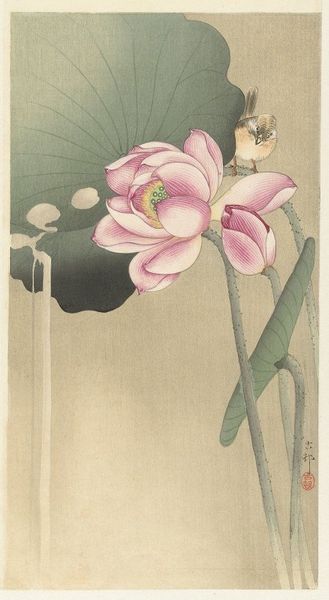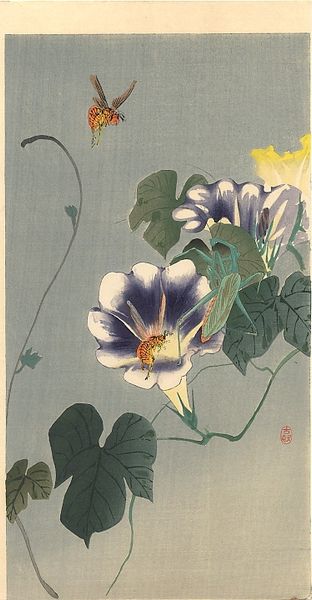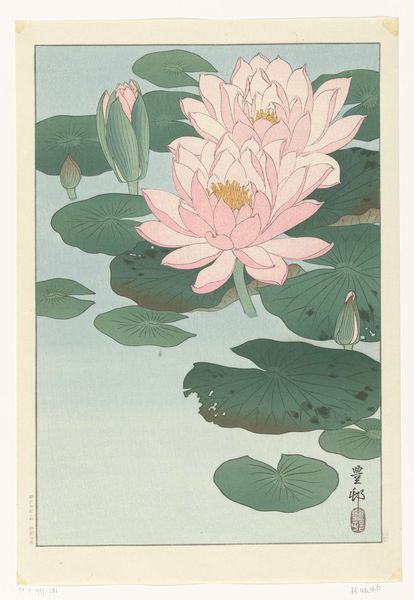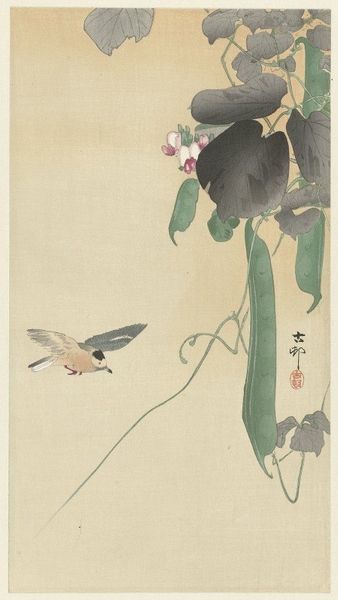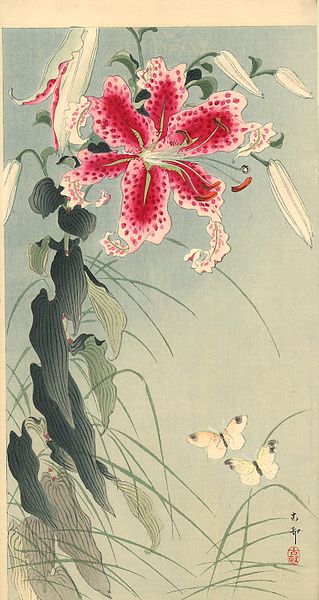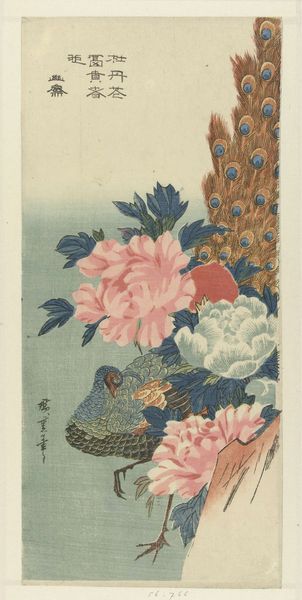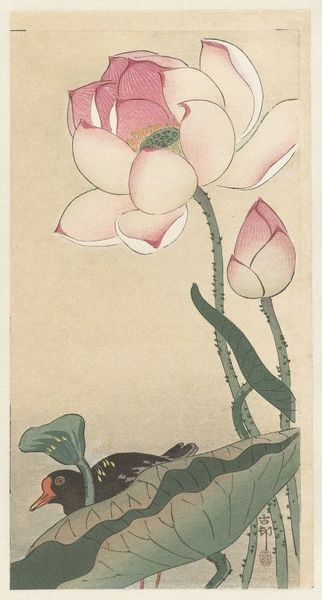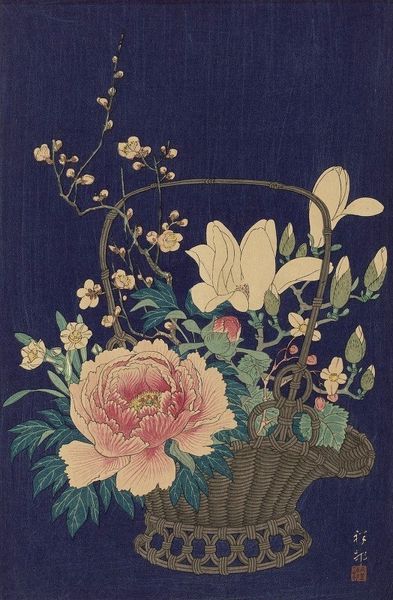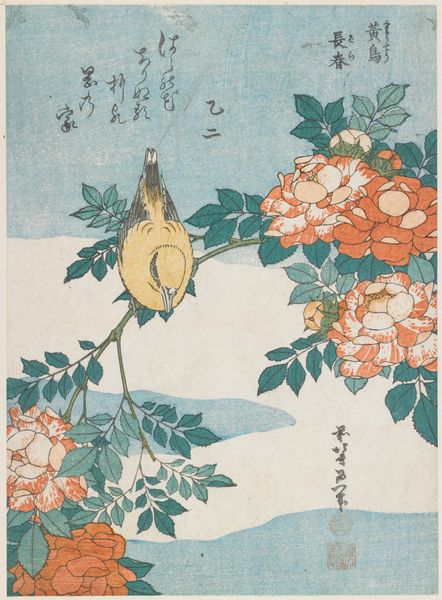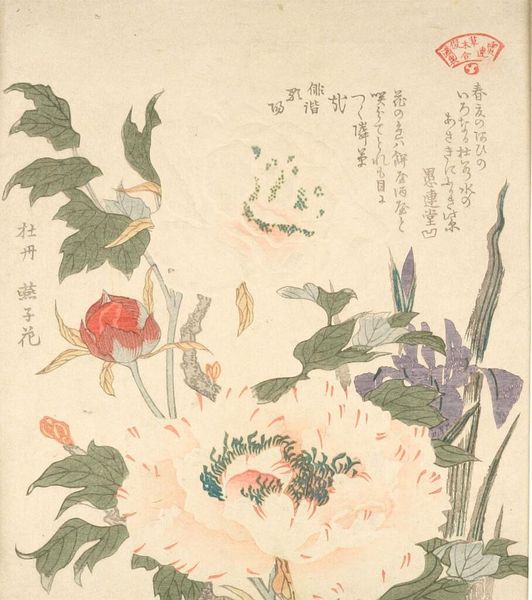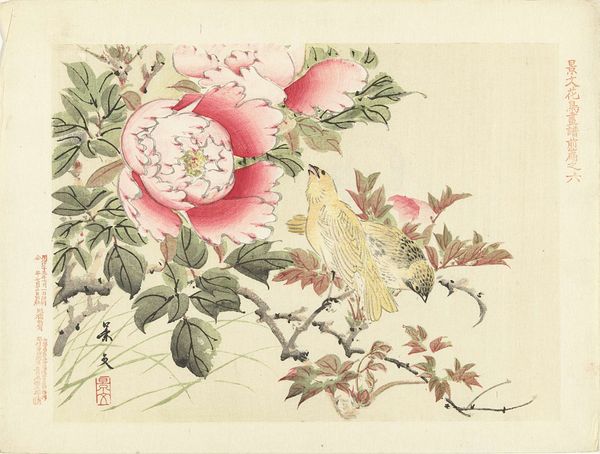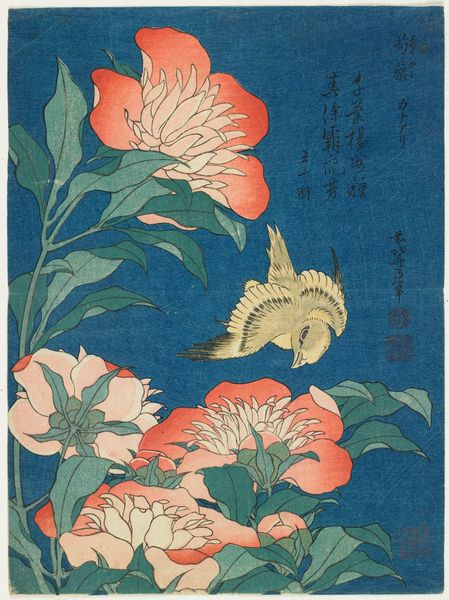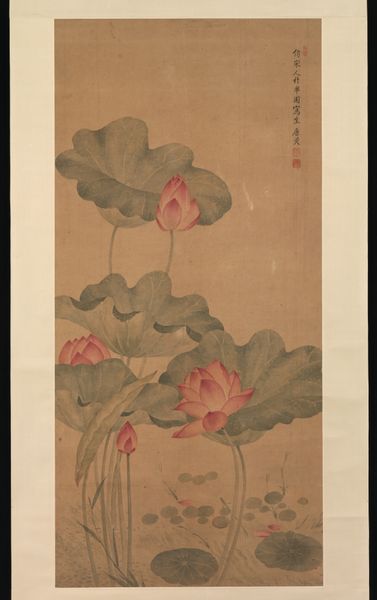
Copyright: Public Domain: Artvee
Curator: This is Ohara Koson’s "Peony with Butterfly," a woodblock print likely created between 1925 and 1936. What strikes you initially? Editor: It’s lovely, in that sentimental way that speaks of fleeting beauty. The peony feels so lush and full, on the cusp of… something. Decay, perhaps? It definitely evokes ephemerality. Curator: Yes, and consider how peonies are rich in symbolism across cultures. In China and Japan, they’ve long represented wealth, honor, and status, often associated with the imperial family. What about its placement relative to that butterfly above? Editor: I find that such associations sometimes overshadow more complex readings. Aren’t peonies also short-lived? It is interesting to juxtapose wealth and high status alongside images of a winged insect, the transformative capacity and inherent vulnerability to nature that it also signifies, even though these might conflict ideologically. Curator: Indeed. Butterflies themselves carry diverse symbolism; transformation, the soul, even joy, or marital bliss. The Japanese might even see them representing deceased spirits. Here, I wonder if Koson is reflecting on life’s transient nature? Editor: It could be that the artist explores some critical position towards socio-economic stratification that still pervades cultural symbolism: is true transformation actually a kind of release from high social roles? How subversive for an artwork of that period! Curator: The soft watercolors and delicate lines, which create a gentle atmosphere of melancholic reflection, invite further contemplation, in contrast to that rigid system! Editor: Ultimately, Koson's composition beautifully uses accepted and emerging icons and symbolism to address very real intersections of nature, wealth, social structure, life and death. Its subtlety makes it powerful. Curator: I concur. It prompts introspection beyond mere aesthetic pleasure, reminding us of art's layered and continuous communication. Editor: Precisely; engaging with tradition can sometimes lead to revolutionary perspectives!
Comments
No comments
Be the first to comment and join the conversation on the ultimate creative platform.
